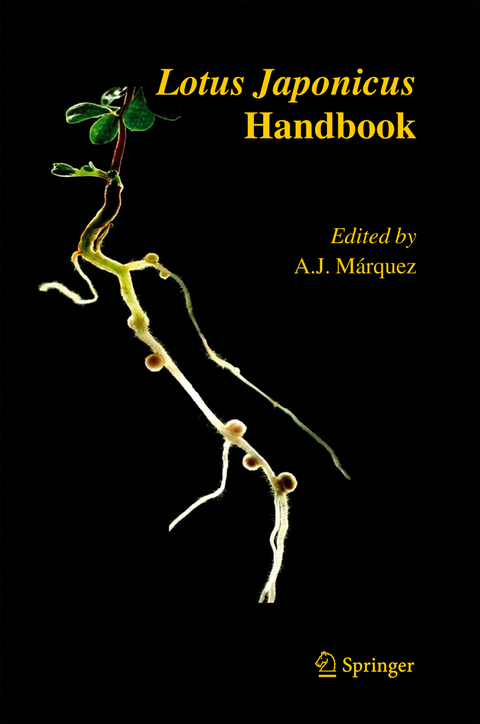
Lotus japonicus Handbook
Springer-Verlag New York Inc.
978-1-4020-3734-4 (ISBN)
Legumes are very important plants playing a central role in biological research. They are a key component of sustainable agricultural systems because of symbiotic nitrogen fixation and other beneficial symbiosis with mycorrhizal fungi. Studies on most of the major leguminous crops are hampered by large genome sizes and other disadvantages which have hindered the isolation and characterisation of genes with important roles in legume biology and agriculture. For this reason Lotus japonicus was chosen as a model species for legume research some ten years ago. Since then, many groups around the world have adopted Lotus as a model and have developed numerous resources and protocols to facilitate basic and applied research on this species. This handbook represents the first effort to compile basic descriptions and methods for research in Lotus, including symbiotic processes, cell and molecular biology protocols, functional genomics, mutants, gene tagging and genetic analysis, transformation and reverse genetic analysis, primary and secondary metabolism, and an exhaustive update of the scientific literature available on this plant.
Lotus japonicus’s a model system.- Lotus-related species and their agronomic importance.- Drought and saline stress.- Methods for studying nodule development and function.- A procedure for in vitro nodulation studies.- Arbuscular mycorrhiza.- Concurrent visualization of gusA and lacZ reporter gene expression.- Embedding root and nodule tissue in plastic (BMM).- RNA isolation using phase extraction and LiCl precipitation.- RNA isolation using CsCl gradients.- 96-Well DNA isolation method.- Genome structure analysis.- Transcriptome analysis using cDNA arrays.- Lotus japonicus expression database.- Procedures for mass spectrometric proteome analysis.- Isolation of peribacteroid membranes for proteome analysis.- Metabolome analysis using GC-MS.- Mutagenesis.- A mutant catalogue of Lotus japonicus.- Tilling.- Ds gene-tagging.- Mapping and map-based cloning.- An in silico strategy towards the development of legume genome anchor markers using comparative sequence analysis.- Information transfer: mapping and cloning in other legumes.- Agrobacterium-mediated in vitro transformation.- Induction of hairy roots for symbiotic gene expression studies.- Transformation-regeneration procedure for Lotus japonicus.- Agrobacterium rhizogenes pRi TL-DNA integration system: a gene vector for Lotus japonicus transformation.- Vectors for reverse genetics and expression analysis.- Nitrate assimilation: Influence of nitrogen supply.- Nitrate and ammonium assimilatory enzymes.- Transgenic plants affected in nitrate assimilation.- Secondary metabolite profiling.- Phenolic Compounds: extraction and analysis.- Elicitation of isoflavan phytoalexins.- An update of work published on Lotus japonicus.
| Erscheint lt. Verlag | 26.10.2005 |
|---|---|
| Mitarbeit |
Stellvertretende Herausgeber: J. Stougaard, M. Udvardi, M. Parniske, H. Spaink |
| Zusatzinfo | XXII, 384 p. |
| Verlagsort | New York, NY |
| Sprache | englisch |
| Maße | 155 x 235 mm |
| Themenwelt | Naturwissenschaften ► Biologie ► Botanik |
| ISBN-10 | 1-4020-3734-1 / 1402037341 |
| ISBN-13 | 978-1-4020-3734-4 / 9781402037344 |
| Zustand | Neuware |
| Haben Sie eine Frage zum Produkt? |
aus dem Bereich


